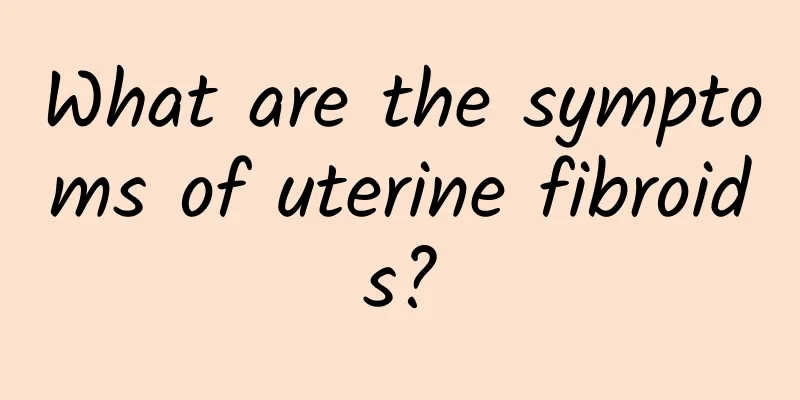What are the symptoms of uterine fibroids?

|
Most patients with uterine fibroids will experience uterine bleeding, which is also the main symptom of uterine fibroids. Half of female friends will have this problem. In addition, some patients will have a feeling of heaviness in the lower abdomen or back pain, but the degree of pain varies from person to person. If uterine fibroids are not treated in time, they can also lead to pelvic inflammatory disease, adhesions, traction, etc. 1. Compression symptoms: When the fibroids grow forward or backward, they can compress the bladder, urethra or rectum, causing frequent urination, dysuria, urinary retention or constipation. When the fibroids grow to both sides, they form broad ligament fibroids, which can compress the ureter and cause hydroureteral or renal pelvis; if they compress the pelvic blood vessels and lymphatic vessels, they can cause lower limb edema. 2. Infertility: Symptoms of uterine fibroids include compression of the fallopian tubes, causing them to twist, or deformation of the uterine cavity, which prevents the fertilized egg from implanting, leading to infertility. .3. Increased leucorrhea: Increased leucorrhea, sometimes with a large amount of purulent and bloody discharge and necrotic tissue discharge with a foul odor. 4. Menstrual changes: The most common symptom, manifested as shortened menstrual cycle, increased menstrual flow, prolonged menstrual period, irregular vaginal bleeding, etc. 5. Secondary anemia: If the patient has excessive menstruation for a long time, it may lead to secondary anemia, with symptoms such as general fatigue, pale complexion, shortness of breath, and palpitations. 6. Abdominal mass: The abdomen is swollen, and a mass can be felt in the lower abdomen, accompanied by a feeling of falling. 7. Pain: Generally, patients do not have abdominal pain, but often have lower abdominal distension, back pain, etc. When the pedicle of the subserosal fibroid is twisted, acute abdominal pain may occur. When the fibroid turns red, the abdominal pain is severe and accompanied by fever. |
<<: Pregnancy after uterine fibroid surgery is more dangerous
>>: What should be paid attention to when using drugs for abortion
Recommend
What treatments are usually available for uterine fibroids?
The high incidence of uterine fibroids is actuall...
What are the early symptoms of cervical erosion?
What are the early symptoms of cervical erosion? ...
Why is there always blood after menstruation?
Why is there always blood after menstruation? It ...
How to treat endometriosis with traditional Chinese medicine?
How to treat endometriosis with traditional Chine...
What is the reason for heavy menstrual flow?
What is the reason for heavy menstrual flow? Fema...
Regulate immunity and plan ahead, it’s smart to eat like this in summer! Decoding the commercially available lactic acid bacteria
In the post-epidemic era, in addition to keeping ...
What is the situation of irregular uterine fibroids? What does irregular uterine fibroids mean?
What is the irregularity of uterine fibroids? Wha...
What are the nursing methods for menopausal patients?
First of all, we need to understand the physiolog...
How to treat vaginal candidal infection
Fungal vaginitis refers to vulvovaginal candidias...
Can hyperprolactinemia heal on its own?
Can hyperprolactinemia heal itself? In fact, it n...
Is it useful to take sugar substitutes if you want to lose weight? Nutritionists reveal: Things you may be surprised about sugar
Sugar is commonly found in our daily diet, such a...
Don’t be a “swallow” when you sprain your ankle. Do this right away…
If you don't warm up enough when jogging in w...
How do symptoms of adnexitis usually manifest?
Adnexitis is a common gynecological inflammation ...
Several common symptoms of cervicitis
Gynecological diseases such as cervicitis are ver...
Lack of menstruation after miscarriage
Less menstrual flow after miscarriage is usually ...









